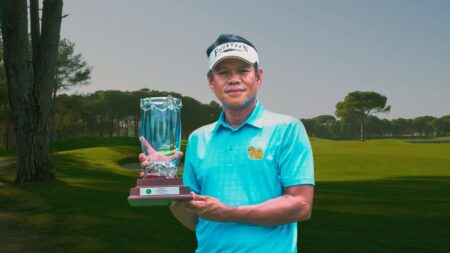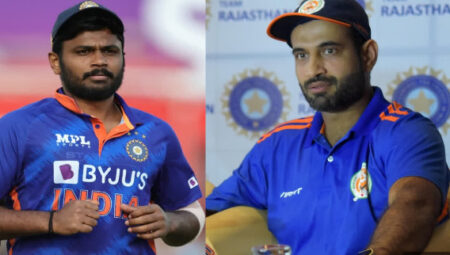Maradona was Argentina’s coach at the 2010 World Cup in South Africa. He led the team to the quarterfinals, but they lost by 4-0 to Germany.
A massive mural of Diego Maradona with his right palm clenched into a fist and a defiant expression on his face has recently appeared in the centre of Argentina’s bustling capital city, which is a concrete jungle. He is depicted wearing a national team shirt.
Massive Artwork in Argentina
The massive artwork is painted on the side of a 14-story building in Buenos Aires and measures 148 feet high by 131 feet wide (45 metres by 40 metres). It is one of several tributes that Argentines have dedicated to their soccer “God” shortly before the start of this year’s World Cup, in Qatar. This World Cup will be the first-ever, ever since his death on November 25, 2020, two years back.

Maradona’s accomplishments and failures as a player on the national team are being remembered. Both, from the famous and infamous goals against England before the country, won the 1986 World Cup to the failed final against West Germany four years later. Also, the doping test got him expelled from the following World Cup in 1994. In short, Maradona’s entire career as a player for the national team is being remembered.
The well-known street artist Mart Ron was the brains behind the world’s largest mural. The mural was motivated by a photograph of the then-Argentina captain that captures his expression shortly before he sang the national anthem during Argentina’s 1-0 loss to West Germany in the final of the 1990 World Cup.
Ron about Maradona
The artist, Ron told The Associated Press during a break from the job he started a month ago that he was in the middle of doing that “it’s a shot of Diego when he was close to winning the country’s third star.” Maradona did not participate in Argentina’s World Cup victory, in 1978 since he was not selected for the team. Argentina went on to win the tournament.
Ron commented that the picture perfectly captured who Diego was and what he did. In addition to being a player, he was the team’s “guts,” “engine,” and “heart.” Ron painted a constellation of stars in the shape of a kite to one side of Maradona’s face. This was a reference to Maradona’s nickname, “cosmic kite,” which was given to him by a well-known radio commentator after the soccer star scored his second goal against England in 1986. Ron also painted several other constellations on Maradona’s body.
The absence of Maradona will be felt in this world cup
“Diego was always a shining light, and his absence will be keenly mourned”, Ron said. Further, added that throughout all of the World Cups, he went about doing his own thing both on and off the field. “Unfortunately, he will not be present in Qatar,” the speaker continued.
The birthday of the legendary soccer player conceded with the public unveiling of Ron’s artwork, which transpired on Sunday.
A gesture by the Argentine soccer organisation
The Argentina soccer organization had acquired the actual jersey that Maradona had worn during the 1986 World Cup, just a few days back. After Argentina’s 2-1 victory against Mexico, in the championship match at the Azteca Stadium in Mexico City, Germany’s great Lothar Matthaus presented it to Maradona as a gift. They had previously traded jerseys after the match.
“When (Brazilian referee) Arppi Filho blew the whistle during the final in Mexico, it was one of the nicest moments I’ve had with him,” she said. During a recent event held outside of Buenos Aires with other former World Cup champions, former player Ricardo Giusti recalled that “I just happened to be very close to Diego, and I was lucky that he hugged me before anybody else.” This took place at the same event as other former World Cup champions.
Everyone had a good day, and we all had a good time with Diego. That’s the unfortunate part about it. “It brings up a lot of regret, sorrow, and disillusionment for all of us,” remarked the former midfielder. After Argentina was unable to win an auction for the jersey that Maradona wore when Argentina played England in the quarterfinals of that World Cup tournament, Matthaus’ donation served as a sort of reparation for Argentina. Matthaus’ gift was given in response to Argentina’s failure to win the auction. In May, the legendary piece was sold at auction to an unidentified buyer from outside the country for a record-setting price of $9 million.
Read more: Qatar’s emir wants World Cup visitors to respect his country’s culture
Also read: Qatar World Cup 22: Which countries promised to entertain football world













